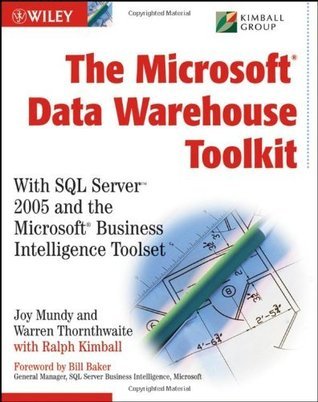What do you think?
Rate this book


Building a data warehousing and business intelligence system is a complex business and engineering effort. While there are significant technical challenges to overcome in successfully deploying a data warehouse, the authors find that the most common reason for data warehouse project failure is insufficient focus on the business users and business problems. In an effort to help people gain success, this book takes the proven Business Dimensional Lifecycle approach first described in best selling The Data Warehouse Lifecycle Toolkit and applies it to the Microsoft SQL Server 2005 tool set.
Beginning with a thorough description of how to gather business requirements, the book then works through the details of creating the target dimensional model, setting up the data warehouse infrastructure, creating the relational atomic database, creating the analysis services databases, designing and building the standard report set, implementing security, dealing with metadata, managing ongoing maintenance and growing the DW/BI system. All of these steps tie back to the business requirements. Each chapter describes the practical steps in the context of the SQL Server 2005 platform.
Intended Audience
The target audience for this book is the IT department or service provider (consultant) who is:
Planning a small to mid-range data warehouse project; Evaluating or planning to use Microsoft technologies as the primary or exclusive data warehouse server technology; Familiar with the general concepts of data warehousing and business intelligence.The book will be directed primarily at the project leader and the warehouse developers, although everyone involved with a data warehouse project will find the book useful. Some of the book’s content will be more technical than the typical project leader will need; other chapters and sections will focus on business issues that are interesting to a database administrator or programmer as guiding information.
The book is focused on the mass market, where the volume of data in a single application or data mart is less than 500 GB of raw data. While the book does discuss issues around handling larger warehouses in the Microsoft environment, it is not exclusively, or even primarily, concerned with the unusual challenges of extremely large datasets.
About the Authors
JOY MUNDY has focused on data warehousing and business intelligence since the early 1990s, specializing in business requirements analysis, dimensional modeling, and business intelligence systems architecture. Joy co-founded InfoDynamics LLC, a data warehouse consulting firm, then joined Microsoft WebTV to develop closed-loop analytic applications and a packaged data warehouse.
Before returning to consulting with the Kimball Group in 2004, Joy worked in Microsoft SQL Server product development, managing a team that developed the best practices for building business intelligence systems on the Microsoft platform. Joy began her career as a business analyst in banking and finance. She graduated from Tufts University with a BA in Economics, and from Stanford with an MS in Engineering Economic Systems.
792 pages, Kindle Edition
First published February 1, 2006